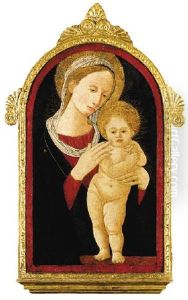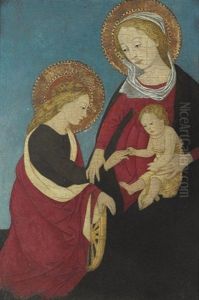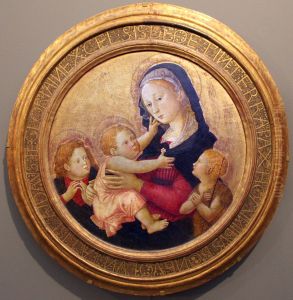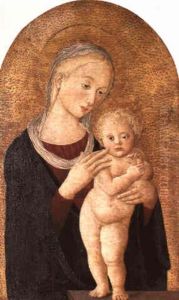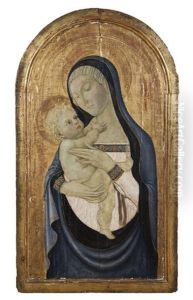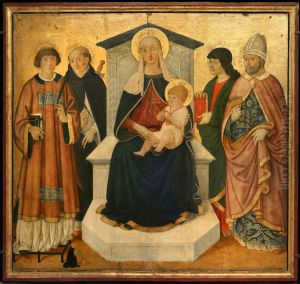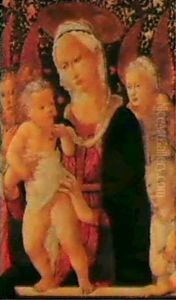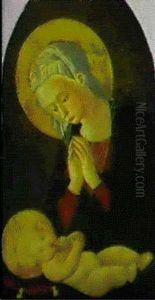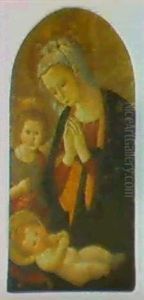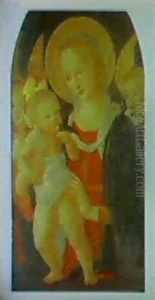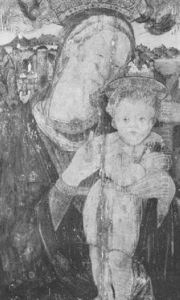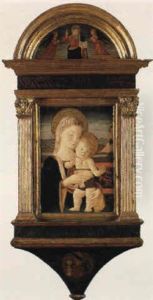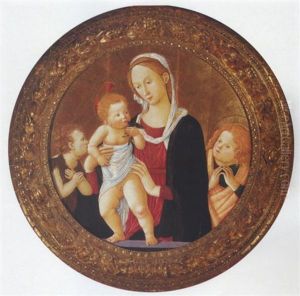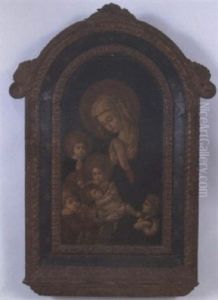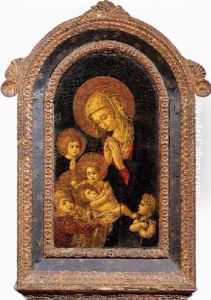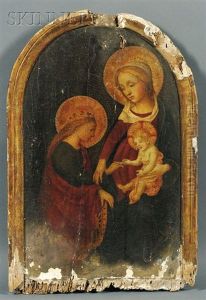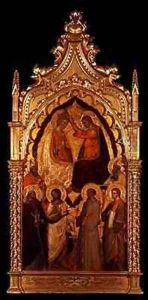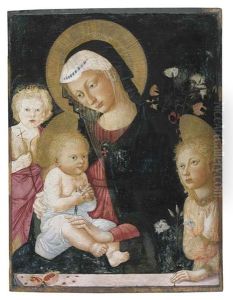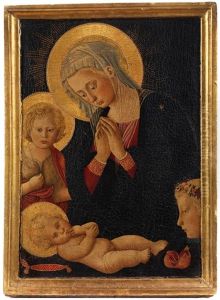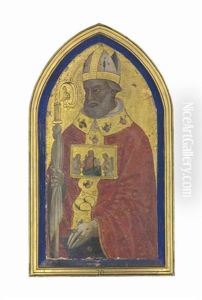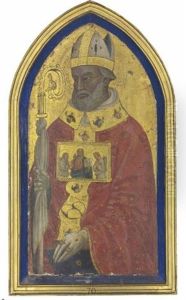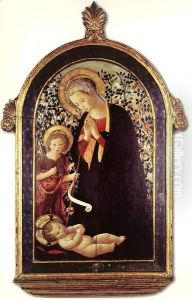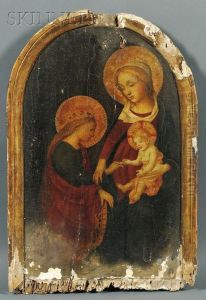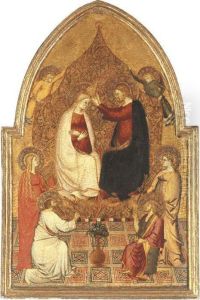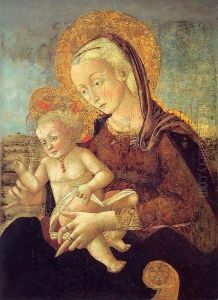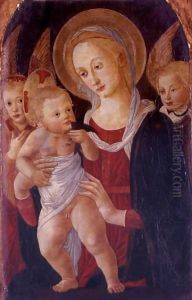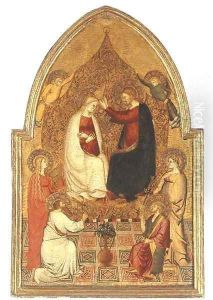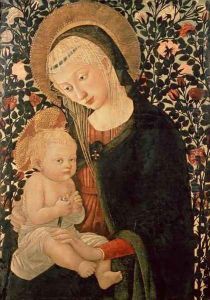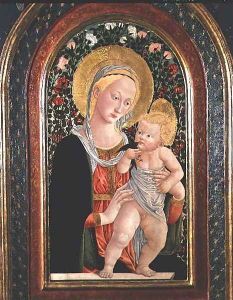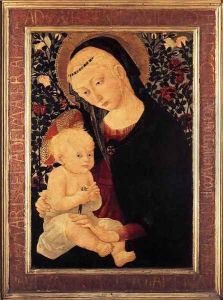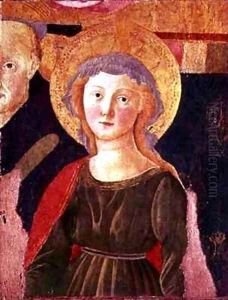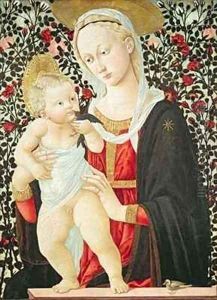Pier Francesco Fiorentino Paintings
Pier Francesco Fiorentino was an Italian painter of the Renaissance period, active primarily in the region of Tuscany. Born in 1444, his works are emblematic of the transition from the Medieval style of painting to the more naturalistic approach that characterized the Renaissance. Fiorentino's contributions to art, though perhaps not as widely recognized as those of his contemporaries like Leonardo da Vinci or Sandro Botticelli, are nonetheless significant for their delicate beauty and attention to detail.
Fiorentino's early life is somewhat obscure, but it is believed that he was a pupil of the painter Neri di Bicci. Under Bicci's guidance, Fiorentino would have been trained in the techniques and styles that dominated Florentine art during the mid-15th century. His work often featured religious themes, a common focus for artists of his time, and he was known for his altarpieces and frescoes in churches around Florence and its surrounding areas.
Throughout his career, Pier Francesco Fiorentino developed a style that was noted for its serene and gentle figures, imbued with a sense of piety and devotion. His compositions were harmonious, and he had a particular skill in rendering the delicate features of his subjects, whether they were figures from the Christian pantheon or portraits of individuals. His use of color was also distinctive, with a palette that favored soft, warm hues that added to the overall sense of tranquility in his works.
One of Fiorentino's most significant contributions to the art world was his ability to convey emotion through his paintings. This emotional resonance, combined with his technical skill, allowed his works to speak to the viewer on a deeply personal level, a hallmark of the best Renaissance art.
Fiorentino's influence extended beyond his immediate circle, as his approach to painting would inspire future generations of artists in Tuscany and beyond. Despite his death in 1497, his legacy lived on, and his works are still appreciated today for their beauty and their place in the history of Italian Renaissance art. His paintings can be found in museums and collections around the world, serving as a testament to his skill and vision as an artist.
